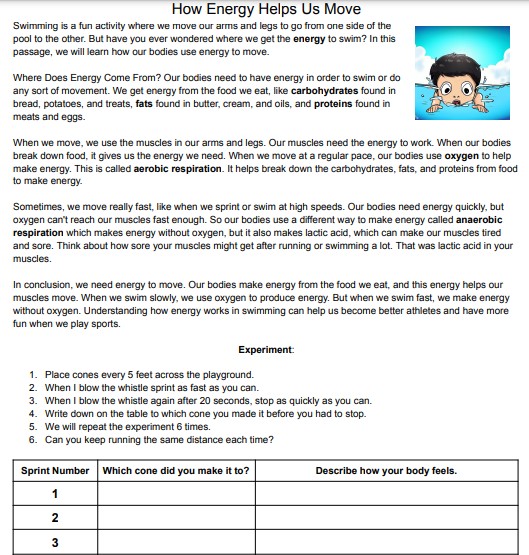How Energy Helps Us Move - Science Lab and Reading Comprehension
Preview/Download

Engage your students with this interactive and informative lab. Designed for elementary students, this lab explores the topic of how our bodies use energy to move. Perfect for science lessons, this resource will help students understand the connection between energy and physical activity. It is written at the 3rd-grade reading level.
In the passage, students will discover where our bodies get the energy to move. They will learn about different types of nutrients, such as carbohydrates, fats, and proteins, found in various foods. Students will understand how these nutrients are broken down by our bodies to provide the energy necessary for movement.
The reading passage explains the role of muscles in movement and introduces students to the concept of aerobic and anaerobic respiration. They will explore how our bodies utilize oxygen to generate energy during regular-paced activities and how, during intense bursts of speed, energy is produced without oxygen, leading to the buildup of lactic acid and muscle fatigue causing sore muscles.
To reinforce learning, an experiment is included. Students will be guided to place cones across the playground and participate in a sprinting activity. They will record which cone they reached before stopping after a designated time. By repeating the experiment six times, students will analyze if they can maintain the same distance with each sprint, reflecting on the effects of energy production and muscle performance.
By completing this worksheet, students will gain some understanding of how energy plays a crucial role in our ability to move.
For other labs, worksheets, and activities in all subjects, visit EducationalResource.org.
